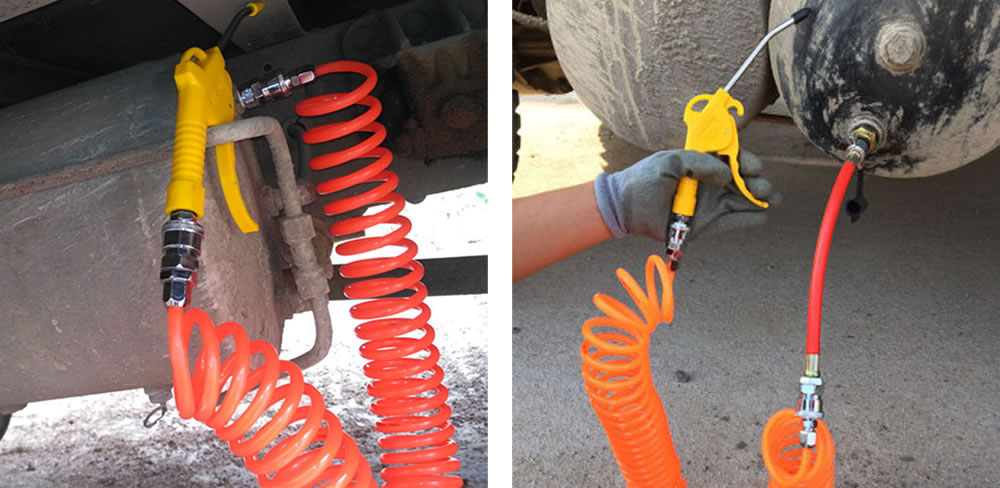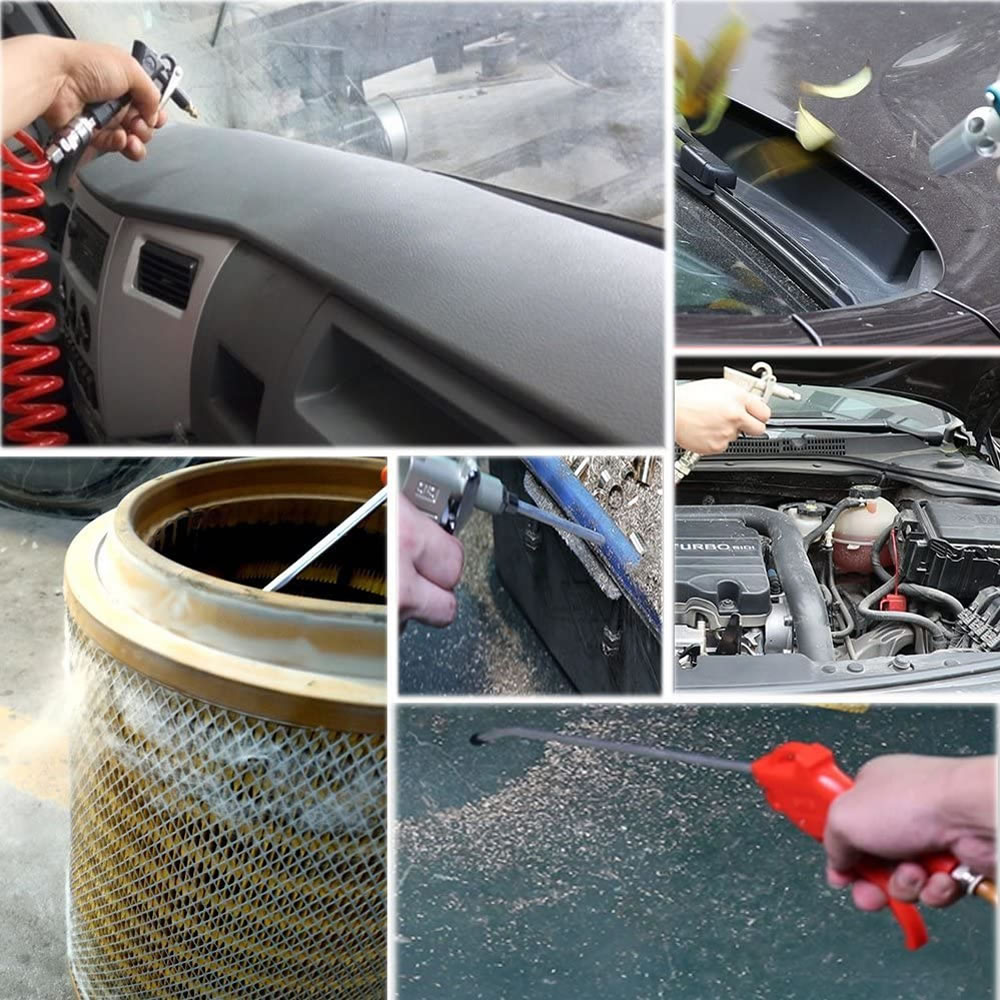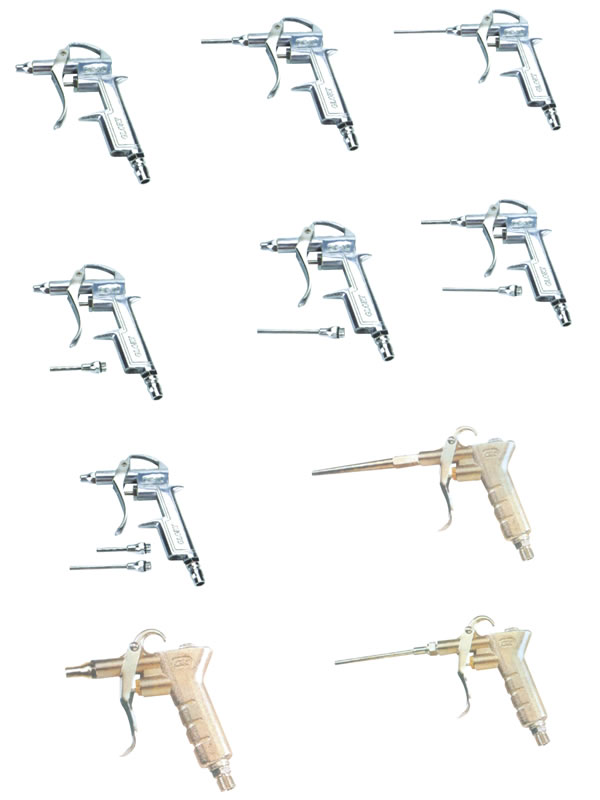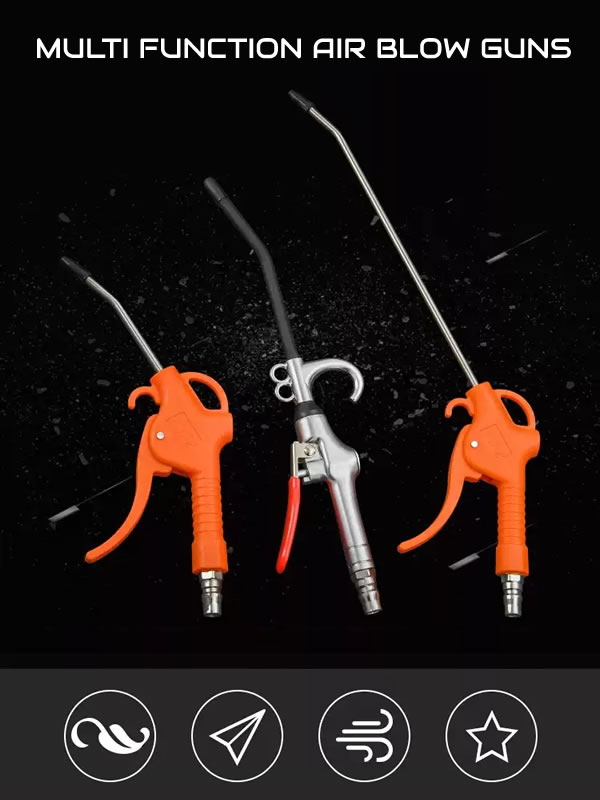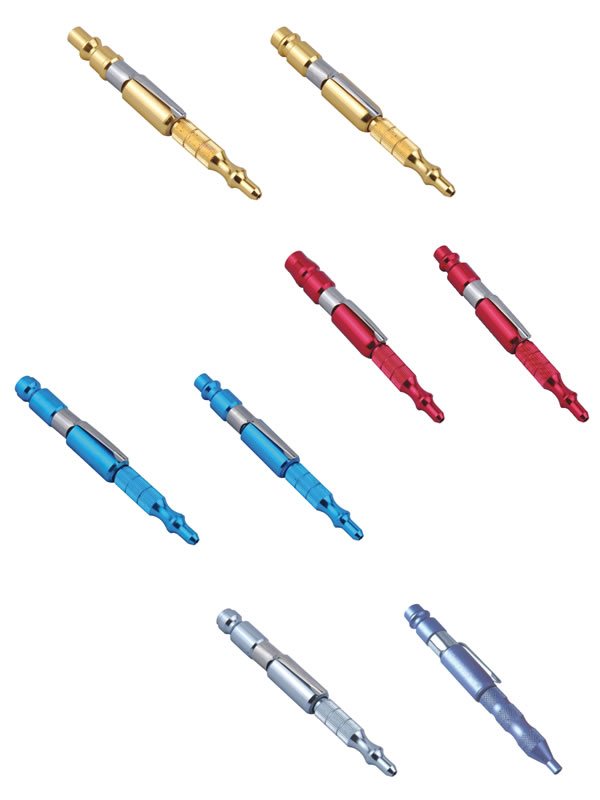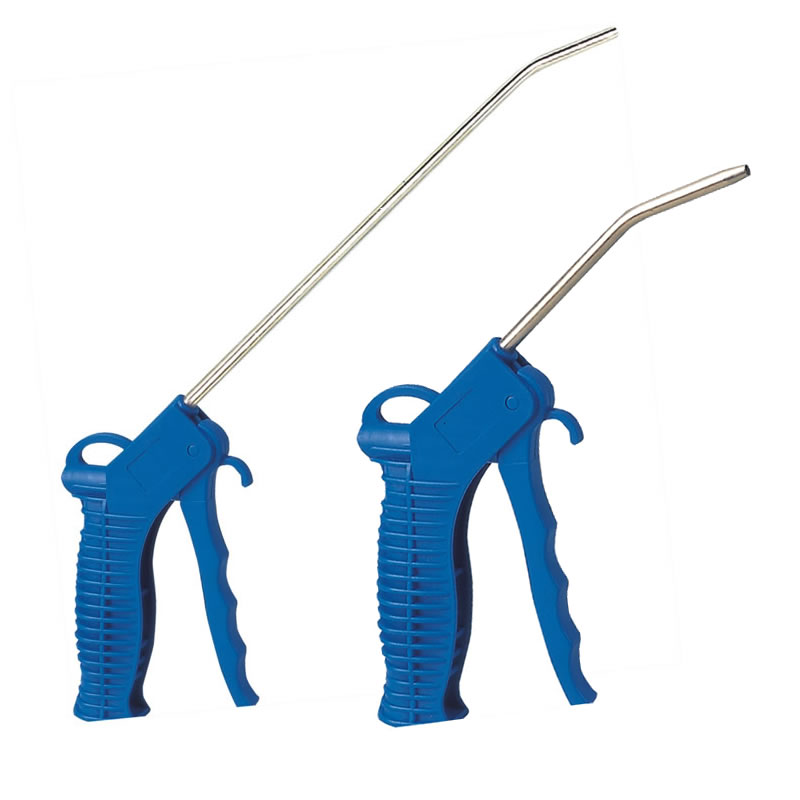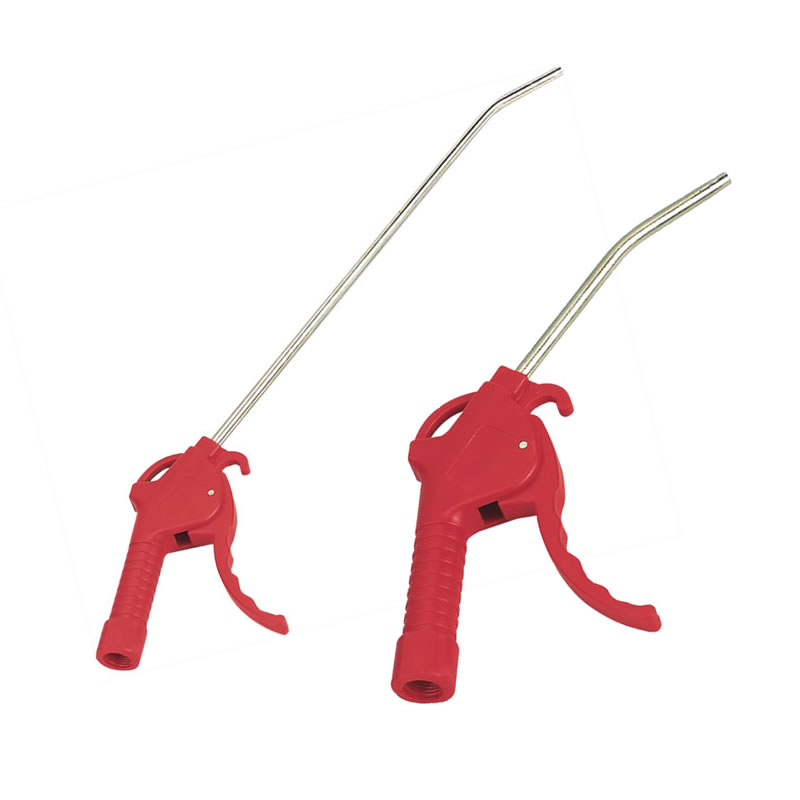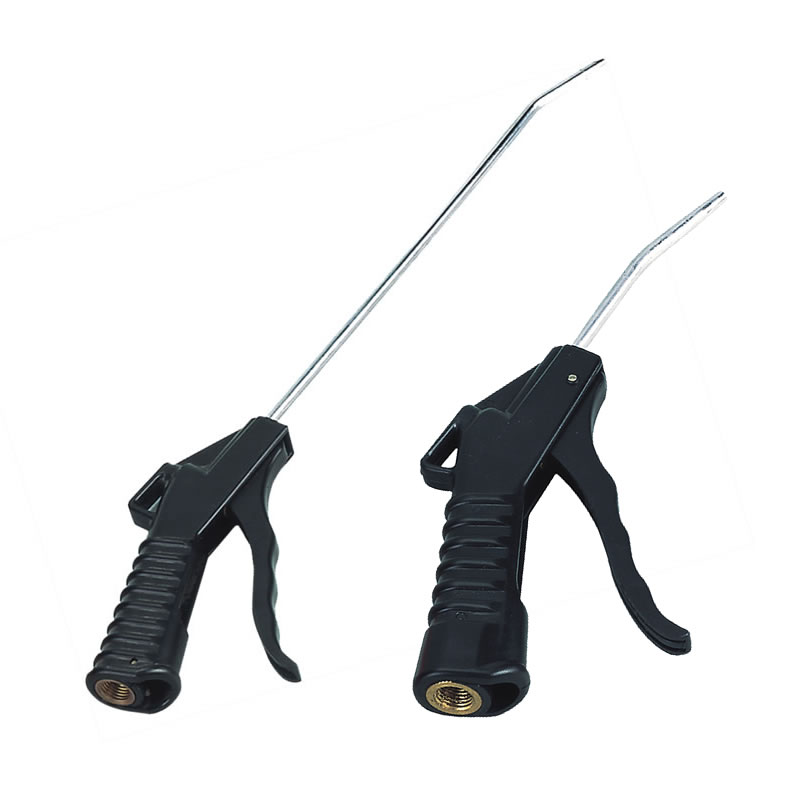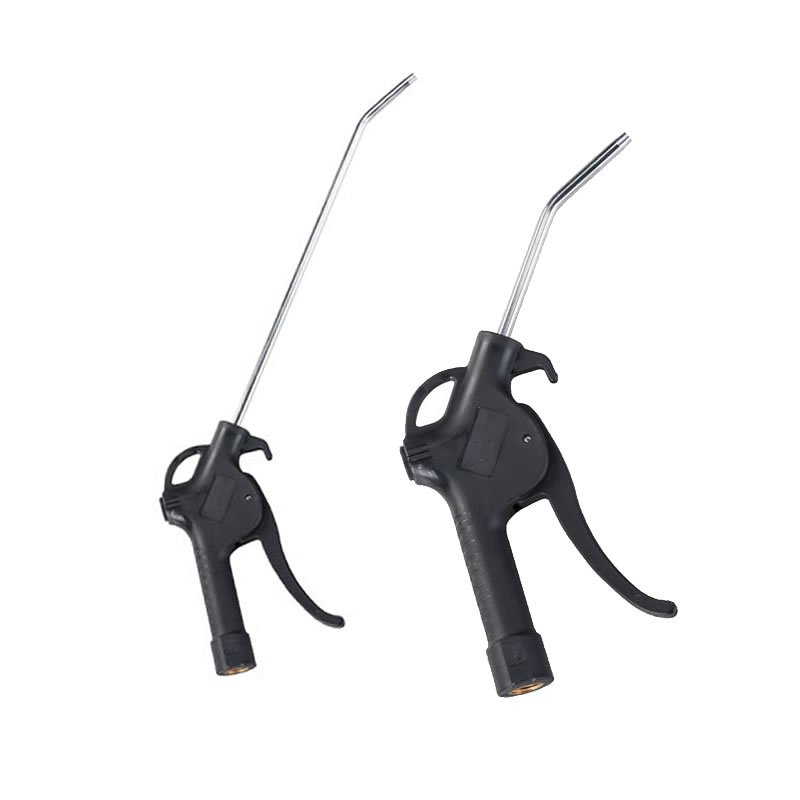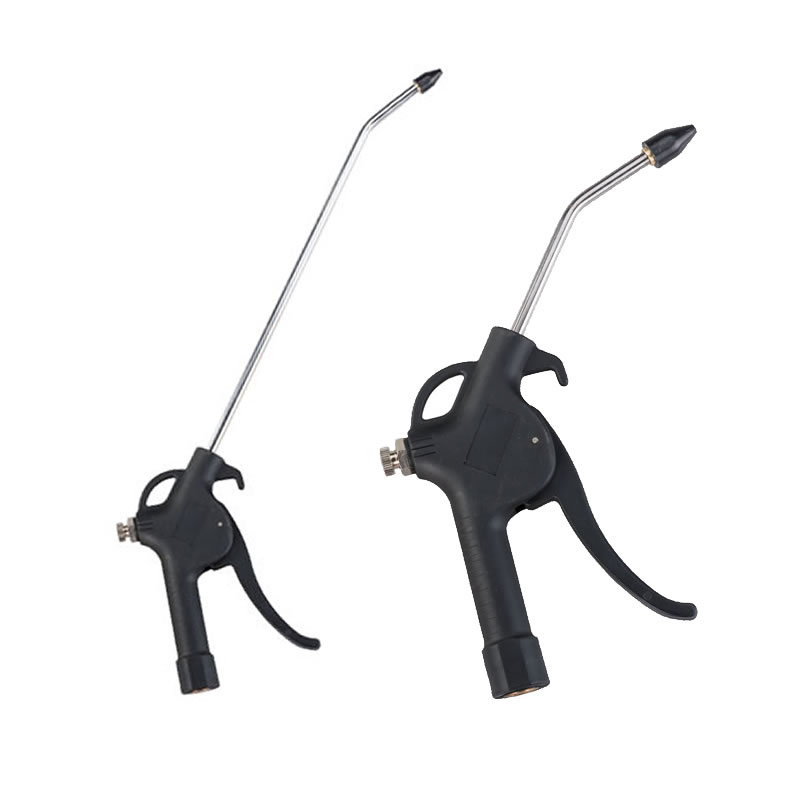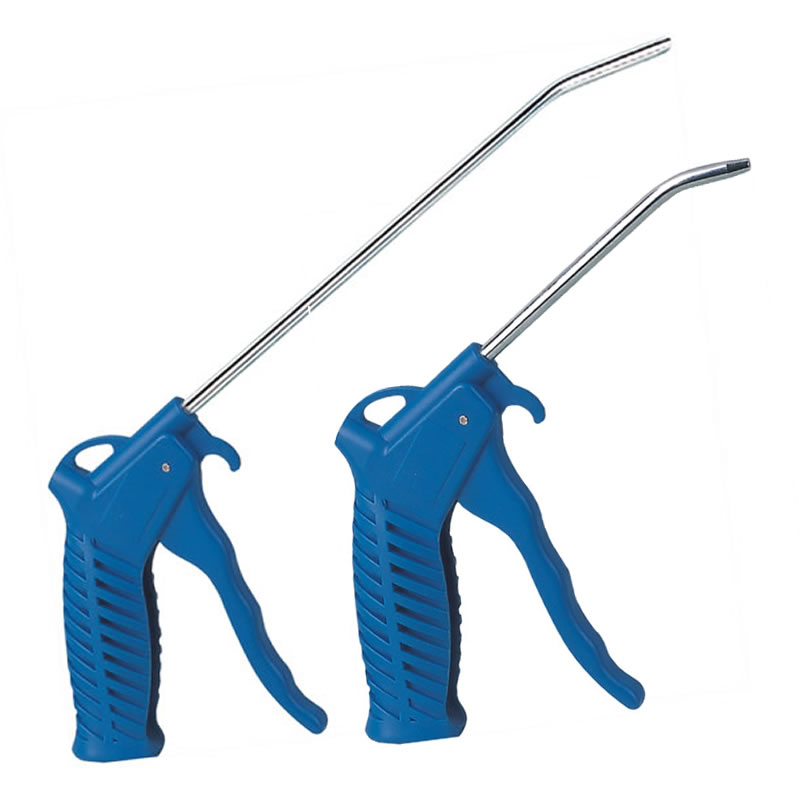Air Blow Gun
s the tool’s name implies, the air blow gun is a gun-shaped tool powered by the continuous flow of compressed air. is a device used for applications requiring compressed air like removal of debris, non-contact drying and blowing. It consists of a nozzle that is attached to the airline, which delivers a steady stream of compressed air.
Typically, this high-pressure cleaning tool consists of a handle with an air inlet (common inlet sizes are 1/4", 1/8", 3/4" and 3/8"), a trigger that allows you to effectively regulate the air flow, a lightweight aluminum or nylon body and a nozzle with a rubber tip that protects the target surfaces and objects from scratching.
A stream of pressurized air produced by the pneumatic blow gun can easily blast things clean, removing dirt, grime, and grease in a matter of minutes.
APPLICATIONS: Home Garages, Professional Auto or Paint Shops, Industrial, Heavy-duty, Farming/Agricultural, and more.
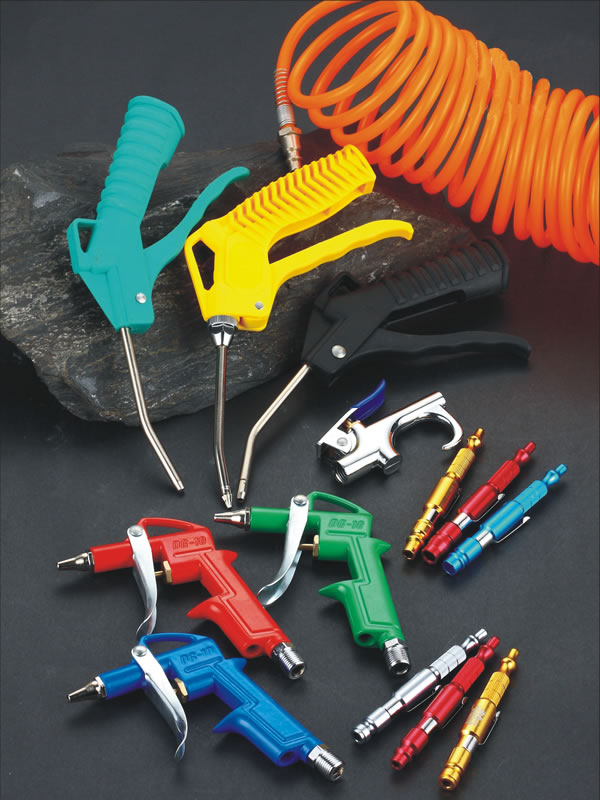
Typically, this high-pressure cleaning tool consists of a handle with an air inlet (common inlet sizes are 1/4", 1/8", 3/4" and 3/8"), a trigger that allows you to effectively regulate the air flow, a lightweight aluminum or nylon body and a nozzle with a rubber tip that protects the target surfaces and objects from scratching.
A stream of pressurized air produced by the pneumatic blow gun can easily blast things clean, removing dirt, grime, and grease in a matter of minutes.
APPLICATIONS: Home Garages, Professional Auto or Paint Shops, Industrial, Heavy-duty, Farming/Agricultural, and more.
Common air intake types
Air blow guns are equipped with various input port types that provide a safe and easy connection with the compressed air supply. Typically, the air blow gun has female threads, so they connect to a fitting with male threads with a hose barb or pneumatic coupling on the other end.

Hose Barb
A hose barb is a fitting commonly used for connecting and securing air tools, hoses or tubes. They are usually made up of plastic, steel or brass. The hose barb’s male threads are connected to the air blow gun and the hose barb is connected to a tube or hose. The barb rings allow for an easy connection that is leak-free. Often times, a hose clamp is used to further secure the hose barb into place.
Pneumatic Quick Coupling
A pneumatic coupling connects compressed air tools to a compressed air line. The air blow gun can be easily connected or disconnected from the air supply line while it is under pressure. It consists of the quick coupling (Figure 3 left side of fitting) and a plug-in or nipple (Figure 3 right side of fitting). The plug-in side follows common styles to make them interchangeable, like the Euro coupling or Orion coupling style. When disconnecting the plug side, the system will stay pressurized allowing you to quickly and easily disconnect and connect different tools with the same connection style.
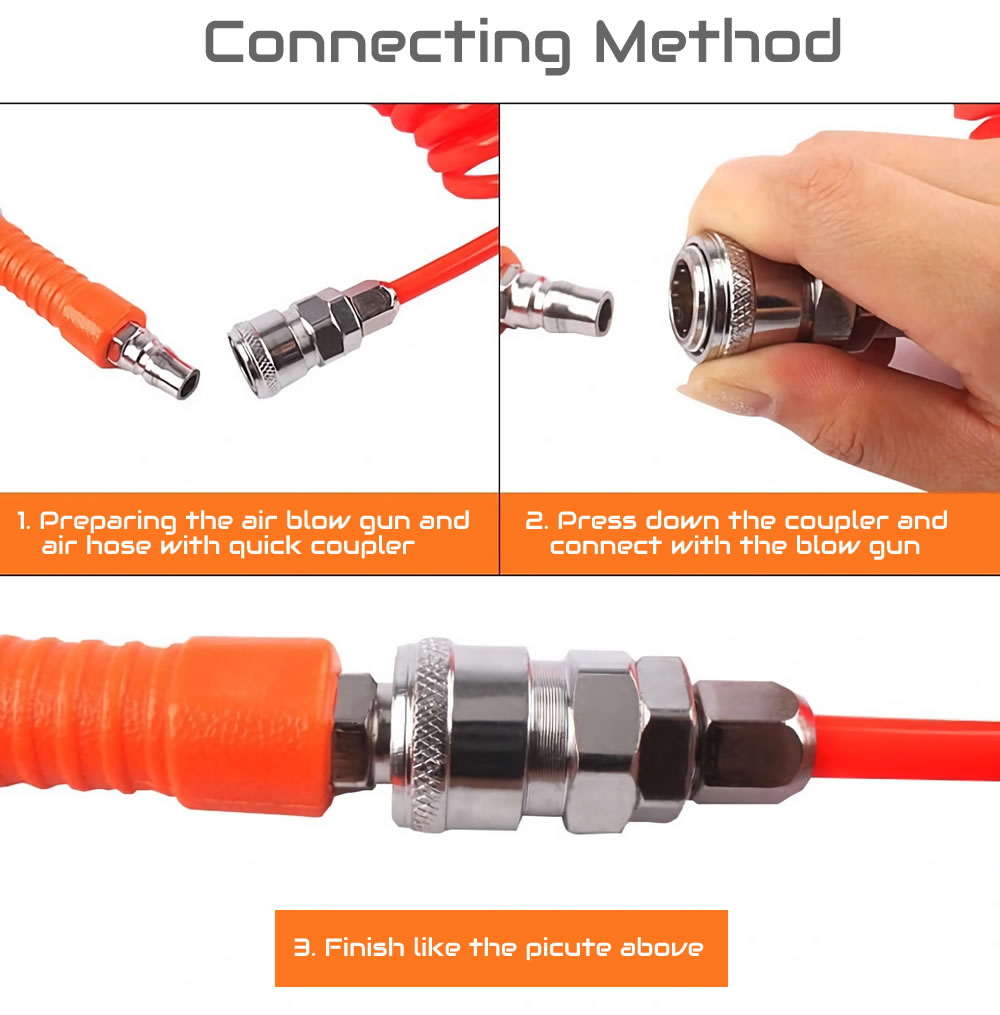
Common output types (nozzles)
Air blow guns have an outlet port that is usually equipped with a nozzle that directs the compressed air coming out. There are six common output nozzle types, that are shown below in the chart. Depending on the application and usage of the air bow gun, there is an optimal nozzle for that usage.
Flow control
To control the air pressure output, there is typically either a control knob or pistol grip design. A control knob can be twisted to adjust and control the flow of the compressed air. The pistol grip design allows for variable flow control based on how much you pull the trigger.
Safety standards
Air blow guns can be hazardous if used without proper care. They can product loud noises that can cause hearing loss, the particles projected into air by compressed air can enter your eye and cause irritation and infections and the compressed air itself can cause injury if it gets into your body through the skin. In the United States, air blow guns should meet the OSHA regulations on compressed air blow guns. The OSHA regulations 29 CFR Part 1910.242(b) states that compressed air should not be used for cleaning purposes except if reduced to less than 30psi (200kPa) and only with use of effective protective equipment.
Housing and internal parts
Air blow guns typically have metal or plastic housings. A plastic housing is much lighter than a metal housing and prevents the cold feel of the handle. The pistol grip and handle provide the ergonomic benefit to the user. The nozzle that guides the compressed air into the desired spot is generally made from aluminum or zinc plated steel. The internal parts of the gun are made out of brass and stainless steel while its sealing is typically made out of NBR. For additional user protection, air blow gun can also have protective shields, generally made up of plastic, for protection against rebound particles.
View our air blow gun selection here!
HOW ARE AIR HOSE FITTINGS MEASURED?

Many of the hoses in our range will come already fitted with some type of end fitting so you can start connecting up to your air compressor and tools, any addition couplers you need will be the same size.
If you're still unsure what size you need, it's simple, the circumference of your hose is the size coupler that you will need. You can use this quick trick to work out the circumference of your hose;
Take your hose and a length of string
Wrap the string around the hose
Keep the string running around the diameter straight and true
Mark the string across both ends
Layout the sting next to a tape measure
Read the length of the string from mark to mark
This will give you the circumference of the hose
Take this length and divide by PI (3.1416)
This will give you the diameter of the hose
There are many different types of air fittings but most air tools use one of just a few types of connector. The main things to consider are the fitting type and the thread size. Common fixing types include ¼” BSP, ¼” PCL and 3/8” NPT.
Air Blow Guns Application
